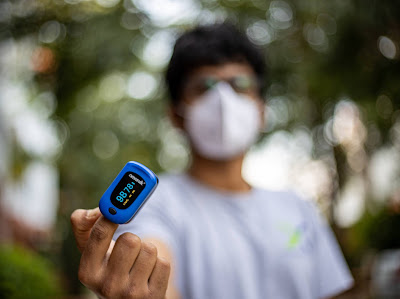A pulse oximeter is used to monitor a person's oxygen saturation. A portable type of oximeter is available for home use called the noninvasive pulse oximeter. Many health care professionals are recommending the use of these less invasive types of oximeters, especially for individuals with certain health conditions or concerns that require detailed monitoring of oxygen levels in the blood.
The pulse oximeter is most commonly used by patients with chronic diseases that affect oxygenation at the cellular level. These include chronic heart failure, sleep apnea, COPD, and asthma. Pulse oximeters utilize a probe that is shaped like a pen, and a sensor connected to the probe to determine the amount of oxygen saturation in the patient's bloodstream. One can monitor oxygenation in the body directly from the finger or mouth, or via the use of a hand piece that is connected to the finger or earlobe with a flexible tube.
The demand for pulse oximeters has skyrocketed with increasing cases of Covid-19. In Germany, from 3 January 2020 to 5:05 pm CEST, 14 July 2021, there have been 3,738,683 confirmed cases of COVID-19 with 91,287 deaths, as reported to the World Health Organization (WHO). Such a surge in demand has led to a rapid increase in the cost of the devices. In July 2021, the National Pharmaceutical Pricing Authority, a government regulatory agency in India that controls the prices of pharmaceutical drugs, put a cap on the prices of the pulse oximeter, blood pressure machine, infrared thermometer, glucometer, and nebulizer. However, several factors can affect the accuracy of pulse oximeters, including poor circulation, skin temperature, skin thickness, current tobacco use, use of fingernail polish, and dark skin pigmentation. The FDA, in February 2021, stated that these devices may not always be accurate.

